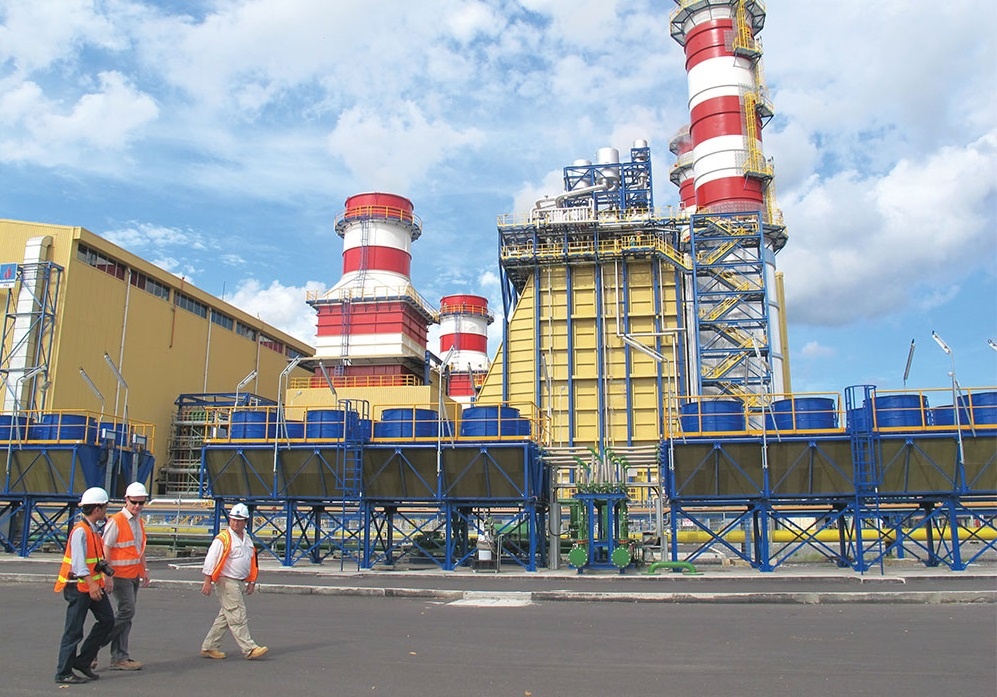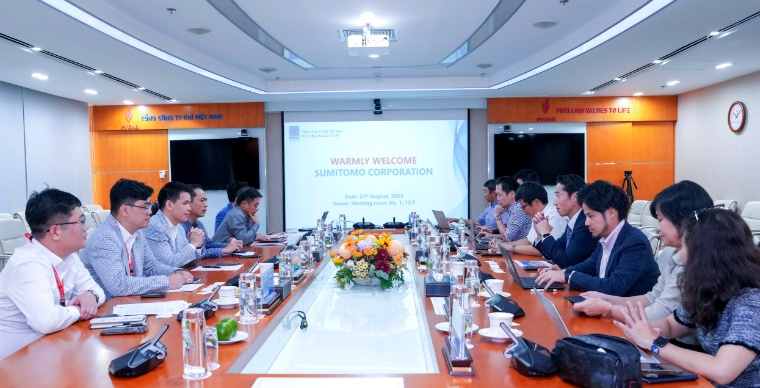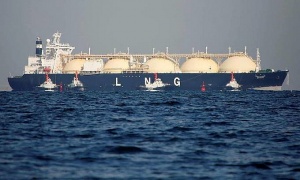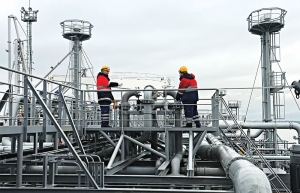The key factors to take into account for switch to LNG
 |
| Lam Nguyen Hoang Thao, senior associate at law firm Russin & Vecchi |
The central provinces of Thanh Hoa and Nghe An are looking for the government’s green light to convert some coal-fired power projects into liquefied natural gas (LNG) -to-power one. How do you think this trend is panning out in Vietnam so far?
I believe that the trend of converting coal-fired power to LNG-to-power plants in Vietnam is a very positive development.
The Power Development Plan VIII (PDP8) called for a reduction in the use of coal and an increase in the use of cleaner fuels. The nation’s goal is to make the transition to green, renewable energy including solar, wind, biomass, ammonia, hydrogen, and nuclear energy.
However, the road to reach these goals is still long and uncertain. Vietnam still has limited ability to supply energy from biomass and green ammonia due to the limitation of technology, expertise, and due to the related high production costs.
Similarly, with hydrogen, the significant challenges are the high cost of storage at extreme temperatures, as well as the cost to meet product purity requirements, and the cost of specialised transport equipment.
That makes LNG the perfect “bridge fuel” because compared to coal, LNG is cleaner. It can help reduce greenhouse gas emissions and improve air quality, it can help Vietnam ensure energy security, and achieve its climate change commitments.
In the immediate future, in order to ensure national power supply security, Vietnam needs to prioritise and enable the investment and the development of LNG power sourcing in power plants. The PDP8 outlined the electricity source composition by 2030 where LNG will account for 14.9 per cent of the total capacity of power plants that would serve the domestic demand.
Above all, the conversion of coal-fired power to LNG-to-power plants can create jobs in the construction, engineering, and operations of related infrastructure. It can also attract investment from foreign companies and reduce Vietnam’s reliance on imported coal.
Of course, there are some challenges associated with the conversion, including the upfront cost because LNG infrastructure needs to be developed and supplies need to be secured. Especially, the regulatory framework for LNG imports and power generation must be clarified.
Regardless of the challenges, I believe that the benefits of converting coal-fired power plants to LNG-to power ones will outweigh the costs. It is a necessary step in Vietnam’s transition to a cleaner and more sustainable energy future.
 |
| During the conversion to LNG, supplies and upfront costs must be addressed, photo Le Toan |
What are the advantages and disadvantages of this process?
LNG plants have several major advantages in comparison with coal plants. They are compact and smaller, and pipelines replace huge coal yards. There is no solid waste accumulating in the surrounding environment. There is no requirement for dust collectors, thus being cleaner.
LNG sources are more reliable, and the plants can be started and stopped quickly. This makes them well suited for responding to fluctuations in demand for electricity. Most of all, financing LNG projects is far easier than financing coal projects.
If comparing converting coal to LNG to developing new plants, firstly, investing in and developing new LNG power plants will involve long-term land clearance and handover, followed by understanding and completing different forms of support mechanisms including technological and operational designs, and administrative procedures.
Secondly, LNG-to-power plants need to have a large capacity to optimise costs and ensure economic and financial efficiency. This potentially causes delays in the process of selecting suitable sites. By converting the existing facilities, the converted plants can utilise the existing strategic location, complete infrastructure, and existing connections to highways and seaports.
They can take advantage of the existing cooling sea-water supply systems. They can also use the synchronous infrastructure of the existing economic zones. Mostly, they can be exposed to less lengthened administrative procedures.
Another advantage of the conversion includes the existing international experience from countries around the world. Specifically, in the United States between 2011 and 2019, over 100 coal-fired power plants were switched to natural gas-fired plants. Vietnam can learn from this experience and apply its own particular conditions.
Another advantage is in saving on cost. The two different methods used by the US to switch coal-fired power plants into LNG-to-power plants were either to retire the existing coal plants and replace them with combined-cycle gas turbines or to convert the boiler or coal-fired steam plants to burn other types of fuel, meaning natural gas.
In the latter method, some plants maintained the coal-burning capacity to allow the plants to burn whatever fuel deemed most efficient. By considering these methods to convert coal as fuel at the existing plants in Vietnam to LNG, the projects might cost less than the development of brand-new facilities.
There are disadvantages, namely the upfront cost of converting a coal-fired plant to an LNG-to-power one can be high, including the cost of modifying the boilers, upgrading other equipment, and building storage and regasification facilities. Further, LNG is a flammable substance. The risks of leaks, explosions, and fires are much higher than with coal. Therefore, LNG facilities must meet much higher safety standards.
One of the biggest disadvantages is the price fluctuations of imported LNG. Many countries are relying on imports, and so is Vietnam. Our domestic gas supplies have shown signs of declining. The exploration and development of new oil and gas reserves encountered delay issues.
What are the factors to successfully convert a coal-fired power into an LNG project, and the challenges for investors?
To convert a coal power plant into an LNG plant, there are many crucial elements that must be considered. Among them are the age and condition of the plant, the regulatory frameworks, the availability of the LNG supplies, the fit-for-purpose equipment supplies, cost of LNG and competing fuels, and use of by-products
Currently, energy investors are facing key challenges in Vietnam including electricity pricing pressure. High and fluctuating LNG prices purchased at the spot would be an obstacle when signing power purchase agreements (PPAs) with Vietnam Electricity (EVN). Long-term supply contracts could overcome the issue. But in the end, EVN as a state-owned enterprise, will be very price sensitive.
So far, there is no electricity generation price framework for LNG-to-power plants. Additionally, LNG is expected to account for almost 15 per cent of the power generation structure. Again, long-term supply contracts can help stabilise the price.
Many LNG power projects such as Nhon Trach 3-4, Hiep Phuoc, Bac Lieu, and Long An 1-2 are facing challenges related to capital arrangements, negotiation of PPAs, and negotiation of gas purchase and sale contracts, for the reasons already stated.
Secondly, there is no commitment from the government of power output. The negotiation of PPAs is difficult. Power plants need a commitment to purchase power at an agreed price for the long term. This supports their long-term financing. However, EVN only wants to purchase power according to its projections of actual demand. These two differing needs must be matched.
Thirdly, there is a lack of technical standards or regulations in Vietnam on the design, construction, transportation, operation, and maintenance of LNG terminals or storage. It is critical that the government provide clear guidance as to its needs and do so such that problems can be managed around these needs.
The government and producers can then harmonise benefits and share risks, necessary in a working PPA. The issues are being assessed by the National Assembly Standing Committee, and its objective is to implement policies for working infrastructure.
 | Sumitomo to cooperate with PV Gas in LNG Sumitomo Corporation expects to collaborate with PV Gas in developing liquefied natural gas projects chain in Van Phong Economic Zone of the central coastal province of Khanh Hoa. |
 | Phu My 3 to rely on costlier LNG The Phu My 3 power plant faces challenges as it transitions from BOT (build-operate-transfer) to Vietnamese control in March next year, marking the culmination of a 20-year contract, according to a recent announcement from the Ministry of Industry and Trade (MoIT) |
 | Hopes rise for further LNG conversion The successful conversion of coal-fired projects to liquefied natural gas ventures is required to ensure energy security and help Vietnam move towards its net-zero ambitions. |
What the stars mean:
★ Poor ★ ★ Promising ★★★ Good ★★★★ Very good ★★★★★ Exceptional
Related Contents
Latest News
More News
- Schaeffler reports strong early output from Dong Nai solar project (December 12, 2025 | 15:16)
- Forestry conference highlights biodiversity and sustainability goals (December 09, 2025 | 13:35)
- Home Credit honoured among top 10 sustainable companies in trade and services (December 09, 2025 | 12:18)
- SCG and seven member companies honoured in Top 100 Sustainable Businesses 2025 (December 08, 2025 | 09:00)
- Nestlé Vietnam pioneers sustainable development and promotes business connections (December 06, 2025 | 12:09)
- CSI 2025 highlights rise of Vietnam’s green champions (December 06, 2025 | 09:00)
- Acecook Vietnam named among top 100 sustainable businesses (December 06, 2025 | 08:00)
- Vietnam’s forest carbon credits draw global interest (December 05, 2025 | 17:41)
- Coro Energy to launch BESS Pilot in Vietnam (December 04, 2025 | 15:12)
- Vietnam strengthens energy storage pathway (December 04, 2025 | 15:05)

 Tag:
Tag:



















 Mobile Version
Mobile Version